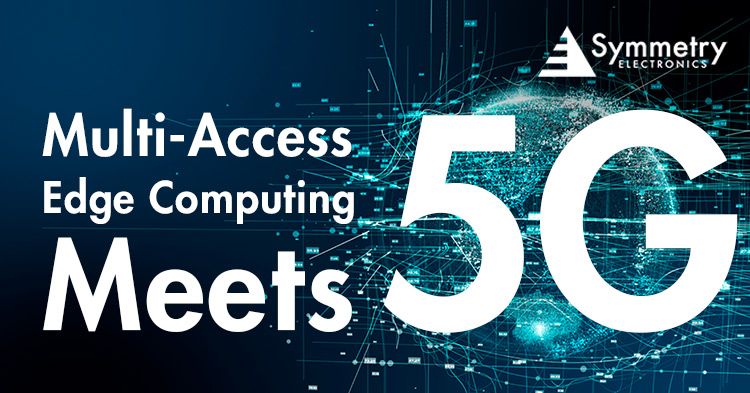- Home
- Symmetry Blog
- Multi-Access Edge Computing Meets 5G
Multi-Access Edge Computing Meets 5G | Symmetry Blog
About Savannah Cuthbert

As Internet of Things (IoT) devices continue to become more advanced, edge computing principles are becoming more and more critical. Edge computing allows the computation and storage of data to take place locally, near the device, as opposed to routing back and forth between a centralized cloud service or data center. Although it is necessary for some data to be stored and processed at a data center, the majority of IoT applications produce data at the network edge. It is therefore beneficial to utilize an edge computing topology to unlock the following benefits:
- Improve Efficiencies: Processing data within close physical proximity to the device allows data to only be pushed to a centralized cloud when necessary.
- Reduce Latency: Timing can be critical for several IoT applications. Lower latency results in optimal user experience and improved response time.
- Enhance Security: Keeping much of the application data local minimizes the risk involved in transferring data between an external data center.
- Continuous Operation: Localized edge applications can operate independent from the rest of the network even if there is a temporary outage with the backend server.
- Decrease Costs: Decentralized data processing reduces network management costs, especially for cellular applications.
Although the introduction of edge computing dates back as early as the 90s, this methodology is yet to be adopted on a mass scale to improve the performance of modern-day IoT applications. “Around 10% of enterprise-generated data is created and processed outside a traditional centralized data center or cloud. By 2025, Gartner predicts this figure will reach 75%” (Gartner).
What Is Multi-Access Edge Computing?
Multi-access edge computing (MEC) brings computing capacity directly to the network edge via the same infrastructure as the network itself to provide the benefits of edge computing to mobile end users. MEC allows for low latency and the near real-time transfer of large amounts of data for demanding mobile applications.
How Can MEC Benefit 5G?
Multi-access edge computing complements 5G by:
- Supporting the real-time transfer of large amounts of data.
- Increasing bandwidth by utilizing edge servers for data processing.
- Providing for high data rate transmissions of complex applications.
- Offering readily available edge cloud access.
